BEST FOR
Snorkeling, sunbathing and beach walks along the path. No lifeguard here but relatively safe for kids on calm ocean days.
Wailea and Kihei have some of the most popular beach and snorkeling areas on Maui.
This southern coastline of the island stretches for more than 6 miles from its northern end at Maalaea Bay to its southern end at the entrance to the luxury resort area of Wailea. Located about 20 to 30 minutes from the airport the town of Kihei is loaded with condos, resorts, restaurants and, most importantly, beaches and beach parks. This makes for ideal snorkeling and sunbathing locations but, just like any popular vacation destination, it can become crowded. That is why it’s often a good idea to head farther south towards Wailea.
There is a reason the major luxury resort on this side of the island is located in Wailea. Aside from stunningly beautiful beaches and dry weather conditions the sand wiping tradewinds rarely blow here till late in the day. Several beach coves are even protected from the wind throughout most of the year. This makes for pristine, calm water snorkeling conditions with excellent visibility. Also, the complexity of the coral reefs and the water visibility can improve the farther south you go as you venture into the remote areas of this side of the island.
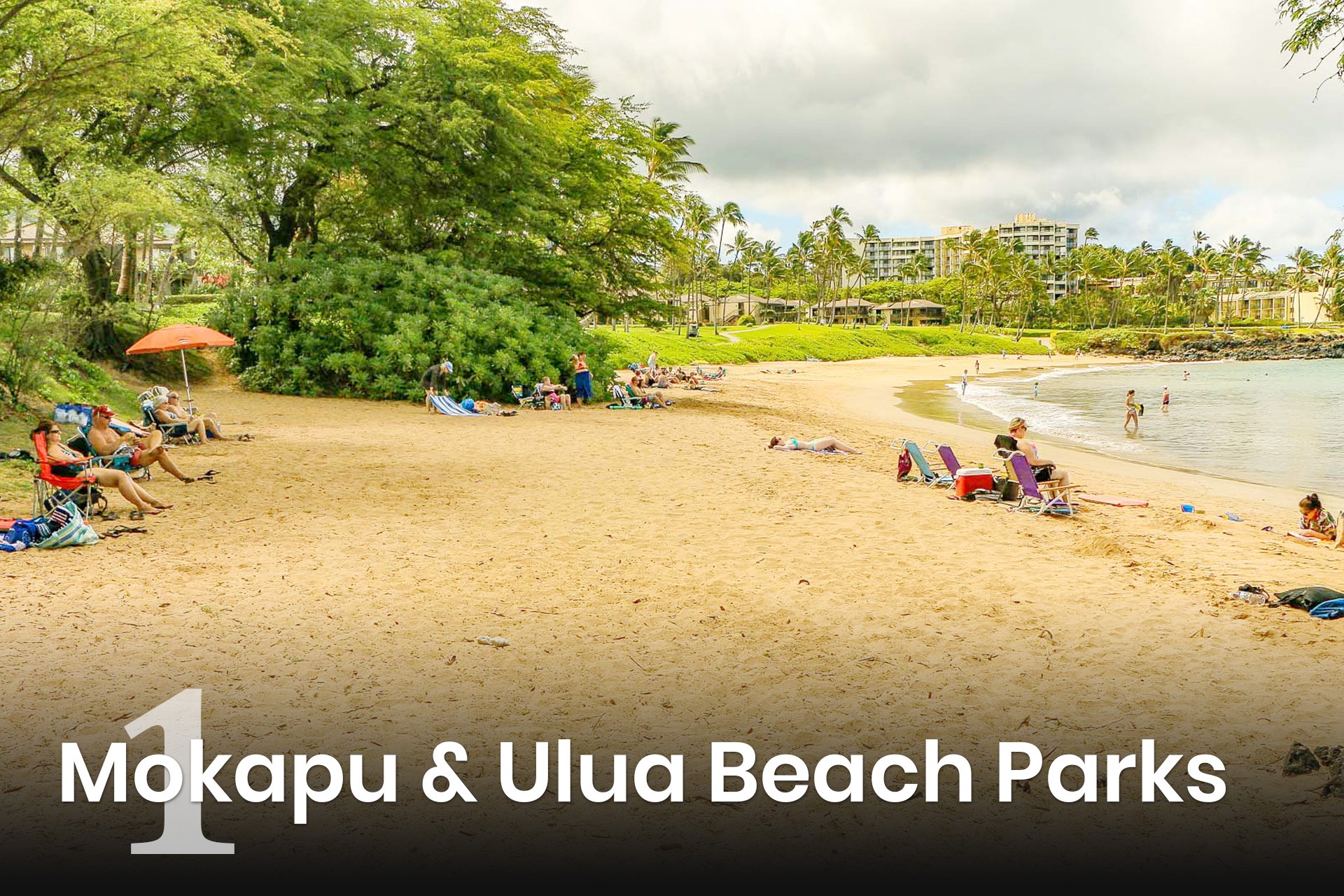
Located between Andaz and the Wailea Marriott, these two beaches (there is one entrance from the road for both) are well known for their snorkeling and diving habitat. The first beach on the north (right) side, Mokapu, has shallow reefs perfect for snorkelers. The second, Ulua, is well known as a dive spot for beginners and their instructors. The deeper reef at Ulua beach supports a turtle cleaning station were small reef fish pick the turtle’s shell clean.
There are bathrooms, showers, good parking and a well-maintained path running from here through resorts and beaches to the south and also accesses several beaches a short distance north.
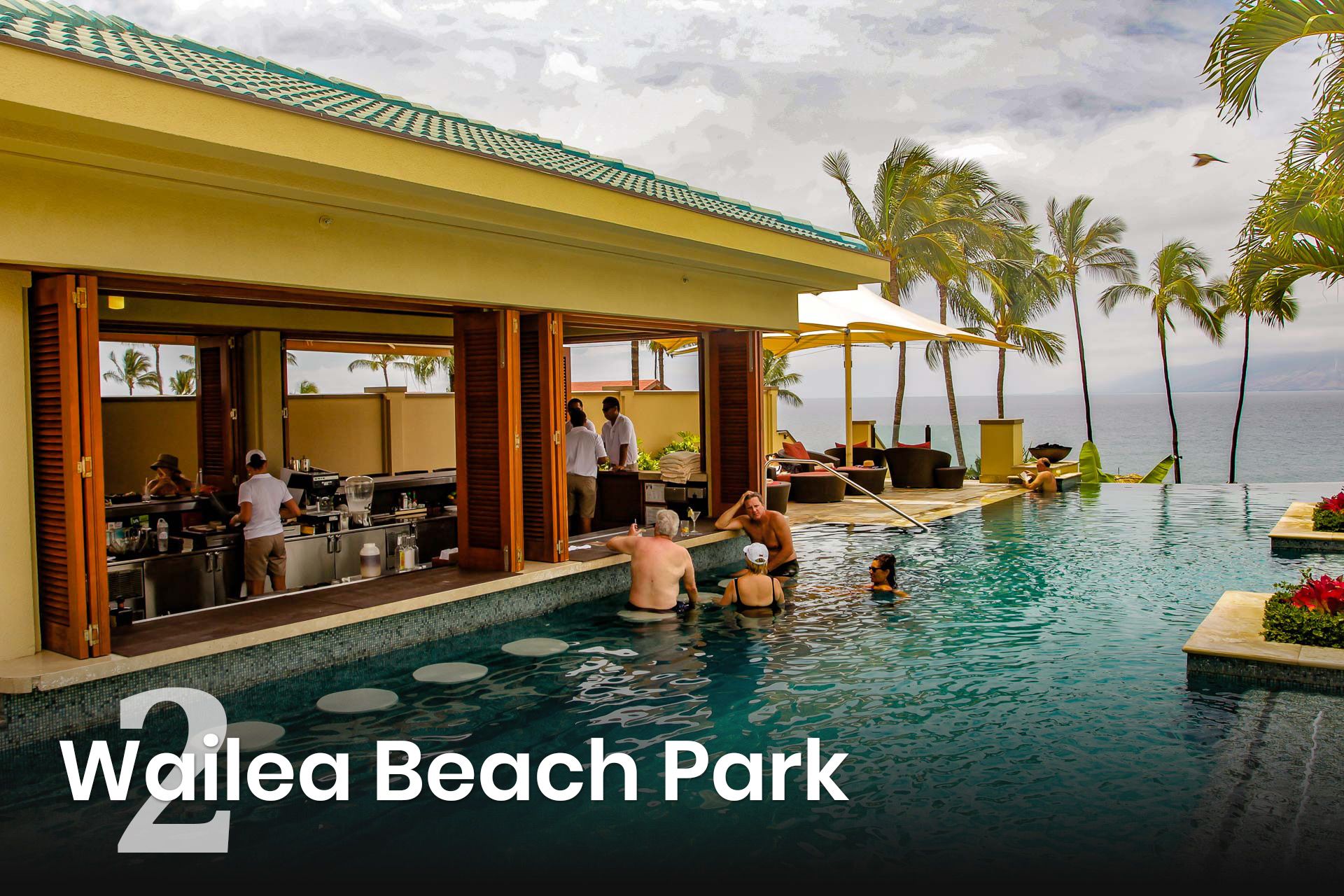
Fronting both the Grand Wailea and the Four Seasons Resort, this beach is the crescent shaped jewel in the crown of two 5 star world class hotels. Since all beaches in Hawaii must allow public access by law you could find yourself sitting next to celebrities enjoying the sun and ocean along this magnificent beach. Snorkeling and kayaking are popular here and in the evenings you can watch the Grand Wailea Luau from the beach during sunset.
Public parking is towards the back of the Grand Wailea between the two resorts. You can use the valet parking at either resort for a price….. It’s a luxurious beach so why not splurge a little and have some lunch after snorkeling? The pool bar at the Four Seasons is an especially nice spot for some food and drinks.

The Polo Beach Club Resort was one of the first hotels built along this beautiful pair of crescent shaped beaches in the 1980’s….The resort is on the southern end of the beach. The other end of the beach fronts the Kea Lani Resort, built in 1991. It was renovated to the tune of $70 million in 2015. It’s a stunning resort who’s beach gives entrance to some of the best snorkeling spots on this side. Small lava peninsulas jut out into the ocean at either end and are loaded with colorful coral and a large variety of marine life.
The original name of the beach is “Ke One o Polo”, meaning “the sand is not thick”. This is in reference to the sharp lava rocks just beneath the sand so be careful when walking into the ocean here. The northern end in front of the Kea Lani has a soft sandy bottom and can get crowded with guests on lounge chairs and in cabanas. The south end much quieter and has a beautiful reef.
A small grassy park with picnic tables and BBQs marks the entrance to this beach. There is plenty of well marked parking with easy access to sidewalk paths. The narrow park is sandwiched between the two hotels and offers no view of anything except the bathrooms. Continue past this park along the path and the beach opens up like a blooming flower.
You can snorkel around the rocky points on either end in calm seas but during large swells it’s possible to get tossed into the rocks and dangerous rip currents are known to form near the beach. As we say in Hawai’i “never turn your back on the ocean” and “when in doubt don’t go out”!
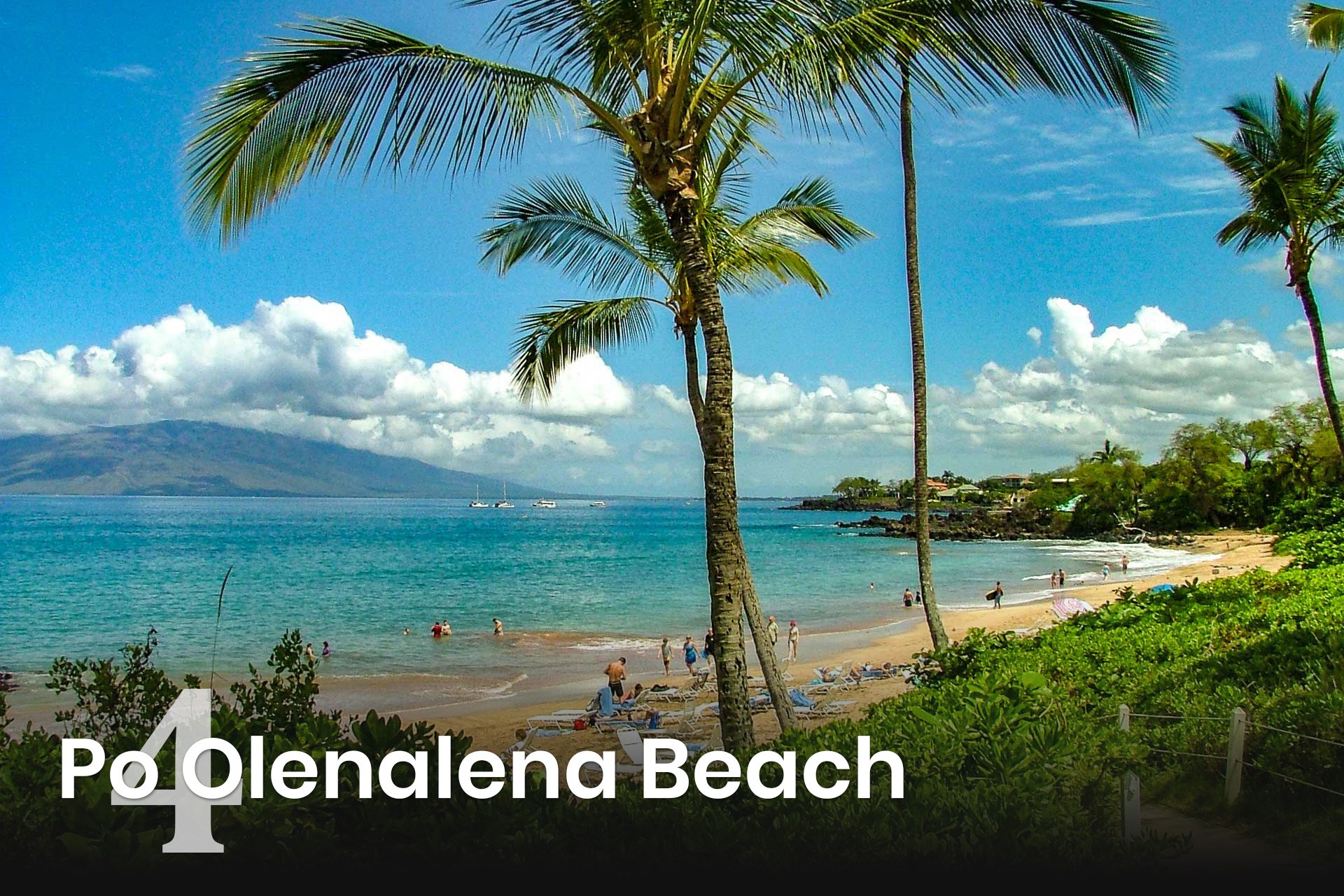
This beautiful long sandy beach has three rocky points that are full of marine life. It’s easy to spot turtles cruising through these healthy reefs. The rocky snorkel spots are at both ends (as usual around Wailea) with one also in the middle.
Also known as Paipu Beach, this beach is a favorite of local families. Residents bring their keiki (children) to play in the surf on the weekends but it often remains quite during the weekdays.
It has become a popular place for weddings and photographers as the sunsets here can be spectacular! Boogie boarding and body surfing is also excellent here during south swells and it’s gently sloping sand bottom is great for kids and beginners on calmer days.
On bigger surf days caution is advised as the center rock outcropping can become obscured by wave action and rip currents can be strong during storms. There is a port-a potty at the north parking lot and a shower at the south entrance.

Makena landing is a popular entrance point for wide range of ocean activity companies. There is not much of a beach here but it makes for an easy sandy entrance to this large shallow bay. It is a perfect location for beginner snorkelers as well as kayakers, divers and stand up paddle boarders. The bay is typically calm and sheltered from the winds making for a excellent place to snorkel or start an ocean tour.
To the right of the bay extends a lava rock shoreline that forms Nahuna Point, home to underwater sea caves, arches and most notably Turtle Town, one of the largest turtle cleaning stations on the island. Turtle Town is a bit of a swim off shore so many choose to snorkel here from a boat or off of a kayak. This is another reason tours launch from here but there is plenty to see within the bay itself.
The bay is home to a vibrant coral reef teaming with butterfly fish, eels, turtles and harmless reef sharks. The underwater topography off shore of Nahuna Point is known to scuba divers as Five Caves, Five Graves, Turtle Town and Turtle Arches. With that many names you know its a popular place and it can get crowded with tour groups during the day. Its best to get here early or wait till later in the day. The grassy park on the northern (right hand) side of Makena Landing has bathrooms and parking, but multiple parking spots exist all along this stretch of the road.
Fun Fact – Makena Landing was also used to ferry cattle to offshore ships during the mid to late 1800’s. The animals were herded into the bay to swim to the boats with the hardy Paniolo (Hawaiian cowboy) swimming alongside on horseback. The cattle were then hoisted on board in large slings.
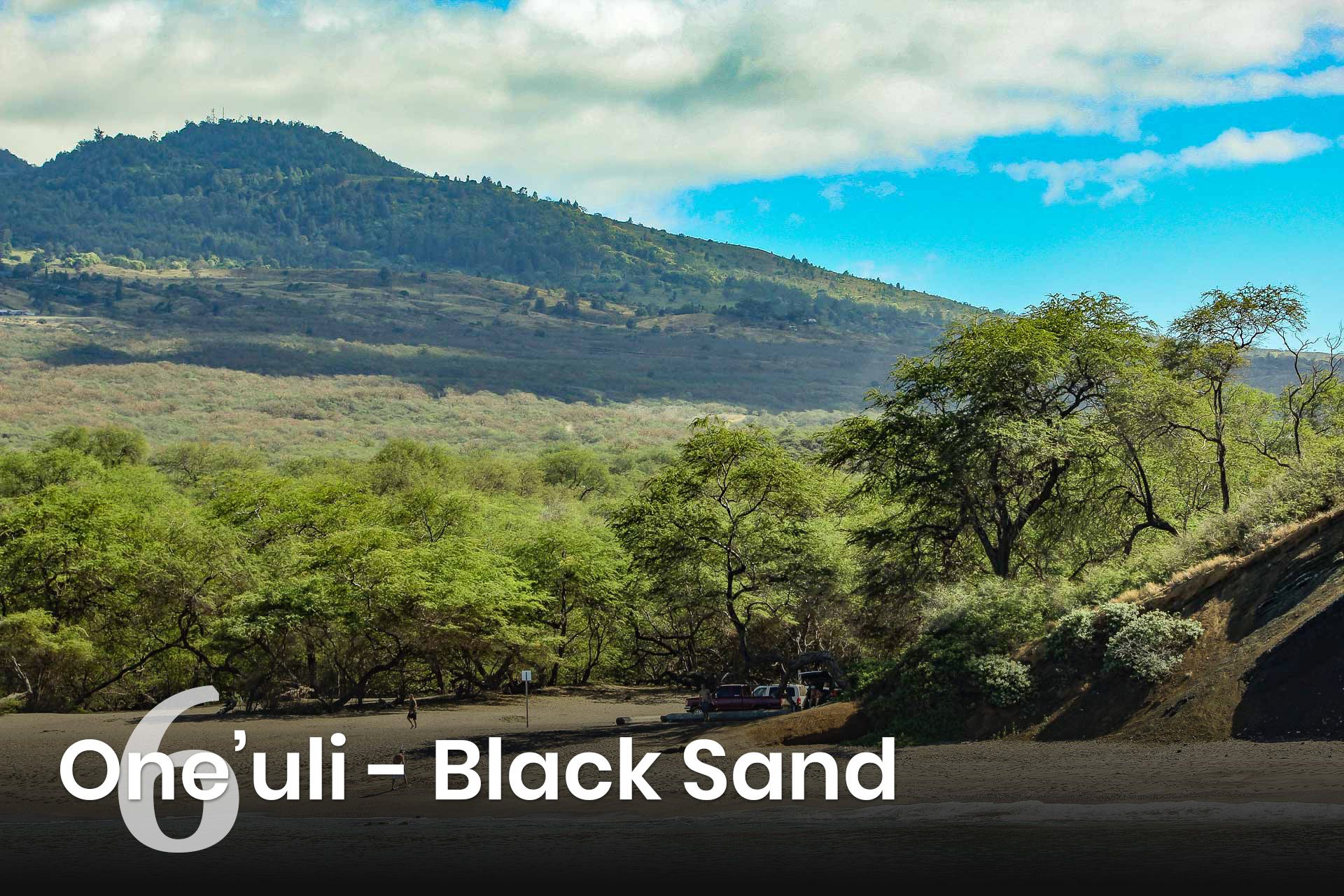
Located down a dirt road, One’uli is one of Maui’s few black sand beaches (the most famous being Hana’s black sand beach), though it is more of a reddish grey than black. This is because of its location next to a 360 ft high cinder cone called Pu’u Ola’i, on the southern (left side) of the beach. The towering cinder cone has its geological history laid bare in the eroded cutaway cliffs facing the beach and ocean.
One’uli beach is unlike the typical beaches of the area whose light colored sand is made up of ocean ground coral. This beach’s sand is made up of ocean ground lava and its color is a blending of the steep layered colors of the loose cinder.
This quiet and uncrowded beach off the beaten path is not that popular for sunbathers or swimming as the sand abruptly disappears at the water’s edge, becoming hard lava rock. However the snorkeling is wonderful as the lava is covered in elaborate corals close to shore. The abundant sea life in this coral attracts many varieties of fish including green sea turtles and even the occasional endangered Hawaiian Monk seal which has been seen lounging on the beach here.
There is a trail that leads to the top of the cinder cone but it is a steep and strenuous hike in a mostly hot and dry area. It’s a sweaty climb but with spectacular views of south Maui at the top.There are no lifeguards or water to be found here so be careful and come prepared. Large ocean swells that come from the south can also create rough surf here so be aware as the lava rocks are sharp and often unseen in the waves.
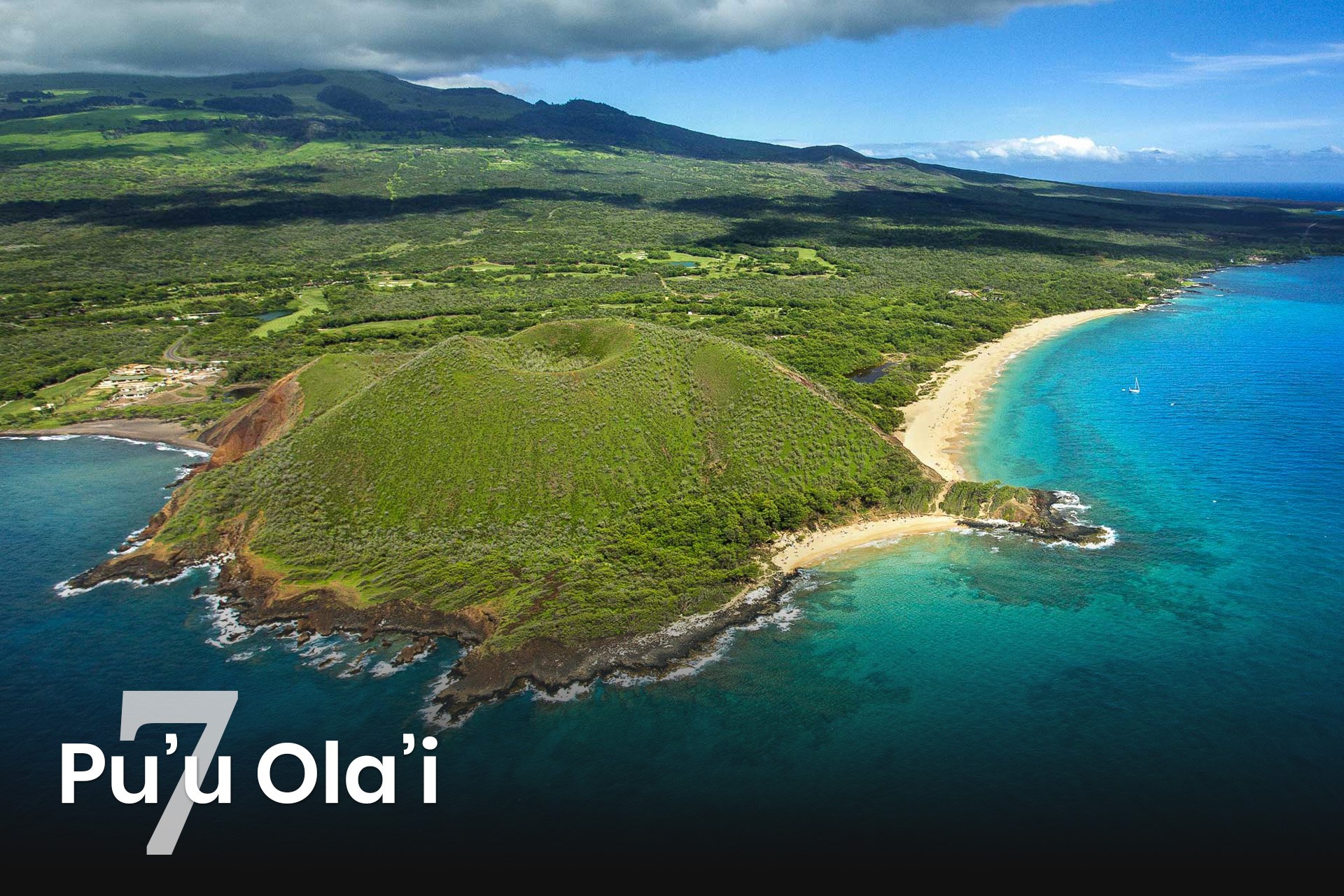
The cinder cone Pu’u Ola’i means “earthquake hill”. Mo’olelo (oral hawaiian history) speaks of this cinder cone’s explosive formation happening in less than a week, estimated to have taken place sometime in the mid 1700’s, making it the next to last place Haleakala volcano erupted. The last eruption was just south of here above Ahihi Kinau Reserve and La Perouse Bay.
Pu’u Ola’i is at the edge of the Maluaka Wetlands and a restoration projects of the North Pu’u Ola’i Wetlands is under way. The project includes restoring the fishpond not far from the beach. Signage has been installed in the parking area explaining about the protected area and the endangered birds you may see here.
Pu’u Ola’i cinder cone is also part of a Hawaiian legend about the volcano goddess Pele. The story is about a Mo’o, which is a giant guardian lizard from ancient Hawaiian mythology. A female Mo’o is said to have fallen in love with Maui’s King Lohiau. Unfortunately for her Pele also favored the handsome king and in a fit of rage cut the Mo’o in half and turned the pieces into stone. The head of the Mo’o became Pu’u Ola’i and the tail became Molokini Crater.
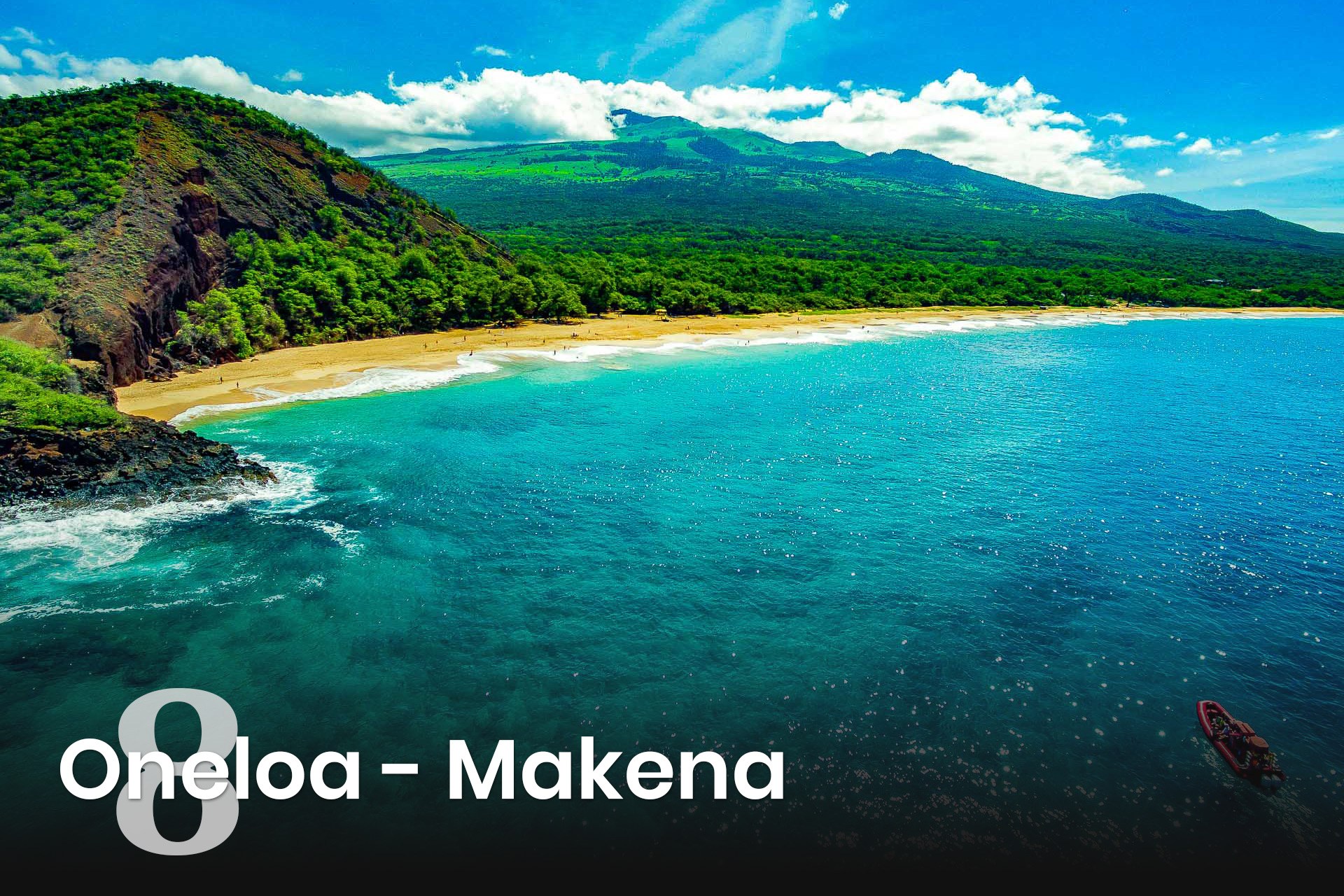
Known on the island as “Big Beach”, Makena is the largest continuous stretch of beach on the island at over a mile long and over 100 feet wide (this is quite wide by Maui standards). Narrow roads lead to three parking areas that are at both ends of the beach with one in the middle. The first parking area is closest to the cinder cone Pu’u Ola’i who’s lava outcropping here can be climbed over to access “Little Beach” – Maui’s remote nude beach.
There is not much in the way of snorkeling at this mile long beach as the bottom is sand and the rip current is strong. The sand drops steeply into the water here making for a brutal shore break as the waves jack up and close out onto bare sand. This is never a beach that is safe for small children or inexperienced swimmers. Even if you are a good swimmer you may want to think twice about swimming here during high surf. Many broken necks and bones have occured here over the years, even among the experienced locals.
If you venture up and over the outcrop to little beach at the far northern (right side) of Big Beach you may find some great snorkeling at the edges of this cove on calm surf days. Rock outcroppings on either end of this beach have beautiful coral heads with lots of marine life living in this undeveloped and remote part of Maui’s waters.
It’s also quite entertaining to watch resident kids play in the shorebreak at Big Beach. Skim boarding and boogie boarding are popular here but keep in mind the locals know how to kick out of these waves before they become smashed into the sand. The beach is so large that there is plenty of space to spread out even on what looks like a busy day.

Just past Big Beach parking areas is a small beach behind a lava rock wall called simply “The Cove”. It is super renowned as a wedding location and this tiny beach can get crowded with wedding parties and photographers late in the day and at sunset. Get there early though and you’ll be treated to an easy ocean access on the right and green sea turtles cruising the shallow reef of this rocky inlet.
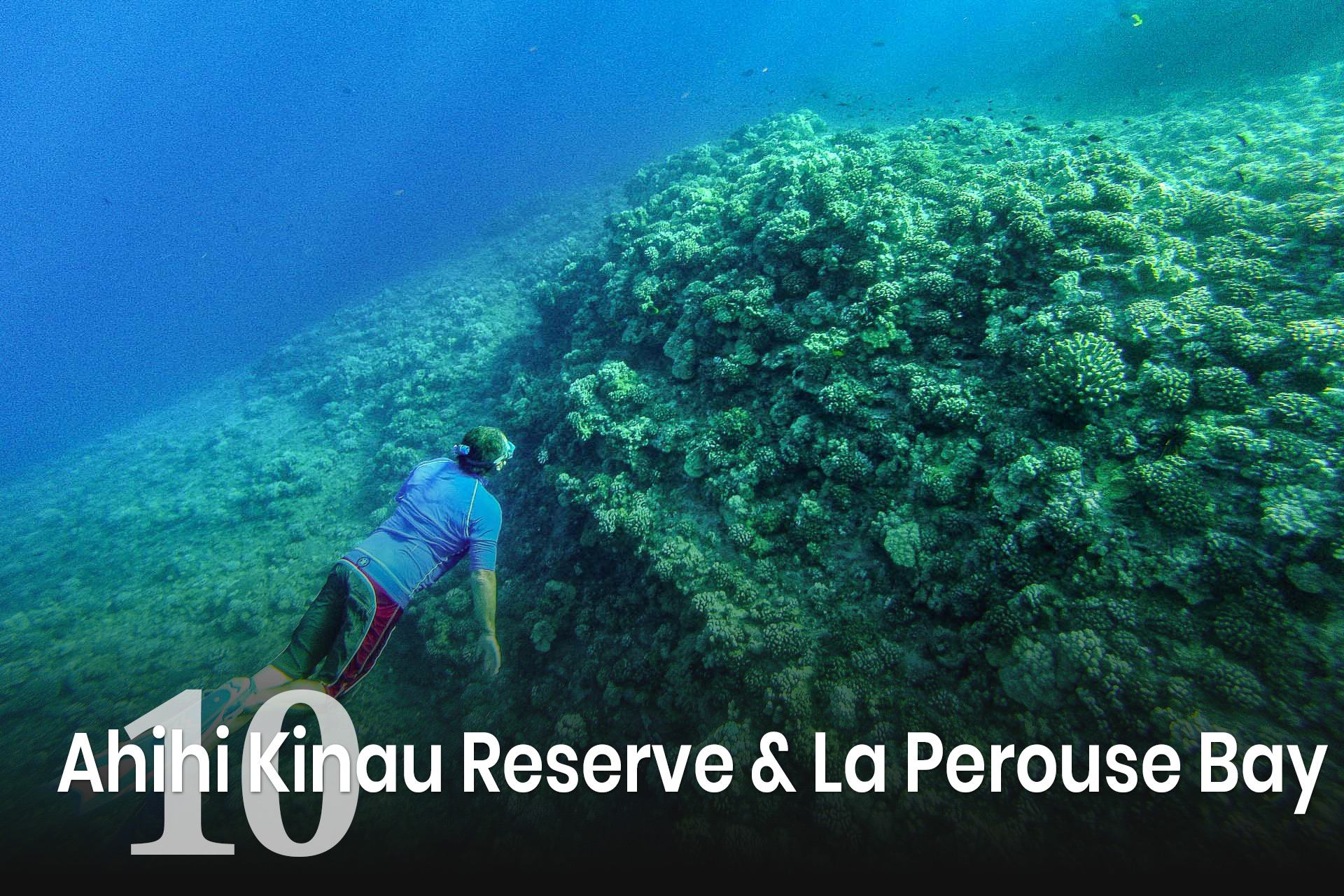
Continue on the road farther still and you’ll find Ahihi Kinau Reserve and La Perouse Bay were it’s possible to swim in the presence of spinner dolphins! Click on the links to learn more about this rugged part of Maui.
Well there you have it. Maui definitely has some of the most beautiful underwater scenery in Hawai’i while luxury resort visitors and residents alike know Wailea is one of the premier beach areas to enjoy during a Maui vacation!
Is Wailea beach good for snorkeling?
Yes, Wailea Beach is an excellent spot for snorkeling in Maui. Its calm waters, vibrant coral reefs, and diverse marine life make it a popular destination for snorkelers of all levels. You can expect to see colorful fish, sea turtles, and other fascinating creatures.
Which beach in Maui has the best snorkeling?
While Wailea Beach is a fantastic choice, Ulua Beach is often considered to have the best snorkeling in Maui. Its crystal-clear waters and abundant marine life make it a true underwater paradise. However, Wailea Beach offers a more relaxed and family-friendly snorkeling experience.
What months are best to snorkel in Maui?
The best time to snorkel in Maui is during the summer months (May to September). The water is typically calmer and clearer during this period, providing optimal conditions for underwater exploration.
Can you swim on Wailea beach?
Yes, you can swim on Wailea Beach. It’s a popular swimming spot, especially for families. The calm waters and gentle waves make it safe for both adults and children.
Additional Tips for dnorkeling in Wailea:
Best Snorkeling Spots in Wailea: Look for the rocky points and outcroppings along the coastline, as these areas often have the most vibrant marine life.
What to Bring: Snorkel gear, water shoes, sunscreen, a hat, and a towel.
Local Snorkel Tours: Consider joining a guided snorkel tour to learn more about the marine ecosystem and discover hidden gems.